The expression &Foo::ch2 is of type char Foo::*, which is pointer to member of class Foo. By rules, a pointer to member converted to bool should be evaluated as false ONLY if it is a null pointer, i.e. it had nullptr assigned to it.
The fault here appears to be a implementation's flaw. i.e. on gcc compilers with -march=x86-64 any assigned pointer to member evaluates to non-null (1) unless it had nullptr assigned to it with following code:
struct foo
{
char arr1[LLONG_MAX];
char arr2[LLONG_MAX];
char ch1;
char ch2;
};
int main()
{
char foo::* p1 = &foo::ch1;
char foo::* p2 = &foo::ch2;
std::cout << (p1?"Not null ":"null ") << '\n';
std::cout << (p2?"Not null ":"null ") << '\n';
std::cout << LLONG_MAX + LLONG_MAX << '\n';
std::cout << ULLONG_MAX << '\n';
std::cout << offsetof(foo, ch1) << '\n';
}
Output:
Not null
null
-2
18446744073709551615
18446744073709551614
Likely it's related to fact that class size is exceeding platform limitations, leading to offset of member being wrapped around of 0 (internal value of nullptr). Compiler doesn't detect it because it becomes a victim of... integer overflow with signed value and it's programmer's fault to cause UB within compiler by using signed literals as array size: LLONG_MAX + LLONG_MAX = -2 would be "size" of two arrays combined.
Essentially size of first two members is calculated as negative and offset of ch1 is -2 represented as unsigned 18446744073709551614.
And -2 therefore pointer is not null. Another compiler may clamp value to 0 producing a nullptr, or actually detect existing problem as clang does.
If offset of ch1 is -2, then offset of ch2 is -1? Let's add this:
std::cout << reinterpret_cast<signed long long&&> (offsetof(foo, ch1)) << '\n';
std::cout << reinterpret_cast<signed long long&&> (offsetof(foo, ch2)) << '\n';
Additional output:
-2
-1
And offset for first member is obviously 0 and if pointer represent offsets, then it needs another value to represent nullptr. it's logical to assume that this particular compiler considers only -1 to be a null value, which may or may not be case for other implementations.

